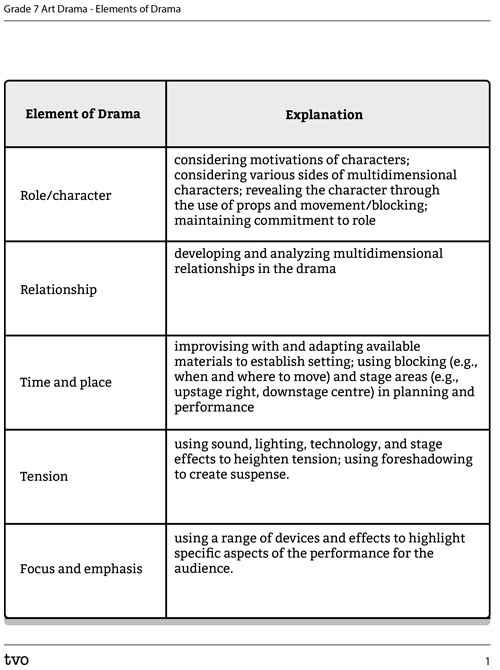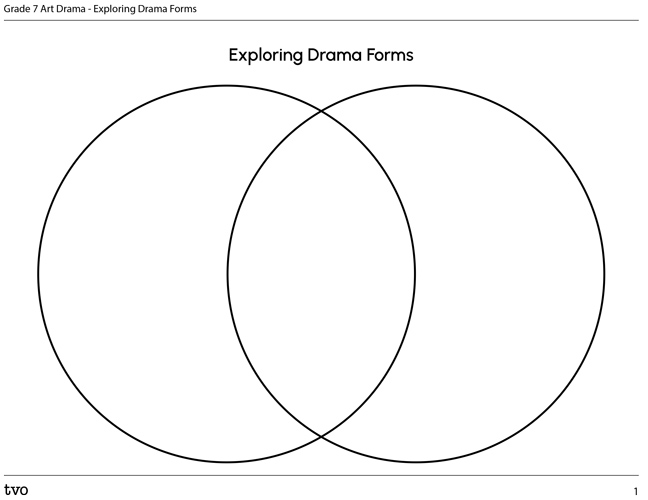Minds On
Warm up
Let’s begin with a deep breathing activity!
Don’t forget to do your safety check!
Warm Up
Warm up

This is a beautiful mindful finger play that is great for practising breathing.
Put one hand out in front of you and open your fingers wide.
Then, with one finger or your other hand, trace each finger on the outstretched hand slowly.
As you slide up a finger, breathe in. As you slide down, breathe out.
After tracing each finger, go backward through each finger again.
This task can also be accomplished by tracing an object of your choice.
Access the following audio recording “Mindful Finger Breathing Activity” to follow this exercise.
Mindful Finger Breathing Activity
Drama game
Select two or more of the following actions and attempt to perform them in slow motion. Be creative, move around your space, and perform the actions in any way you prefer!
|
swimming |
horseback riding |
preparing a meal |
|
driving a vehicle of your choice |
climbing a tree |
washing a large window |
Let’s get started
What important messages can be learned from theatre?
Explore the following short videos.
As you explore, think about what these performances could include that would help us learn more about the community who wrote and/or performed this theatre work.
Press ‘Example’ to access a clue to help you get started.
Could the message of the play help us understand the community who created it?
Record your thoughts and ideas using a method of your choice. Considering adding your work to your drama portfolio.
Access this video entitled “Actors on stage in Folk Kagura” to learn more about Shinto theatrical dance.
Access this video entitled “Antoine,” a play about the life of Antoine de Saint-Exupéry.
Action
Get ready, get set…
Why is drama and theatre important?

Theatre has always been used and is still used as a reflection of society. This could mean that theatre is a commentary, theatre is education, theatre provides a space to have difficult conversations. It portrays social values. Drama influences our own lives and brings people together. Playwrights use theatre to talk about politics and social change.
Social value is a set of principles that are morally accepted by society, such as respect for human dignity.
Over time there have been many different types of drama and theatre developed and performed. These types of drama forms or traditions are important because they reflect particular social values.
Let’s explore three types of drama forms that share important information about cultural social values.
Inuit throat singing
The Inuit are original people from the Arctic and northern regions of Canada, Alaska, Russia, and Greenland.In Canada, the Inuit homeland, Inuit Nunangat, encompasses Nunavut, Inuvialuit (the Northwest Territories and the Yukon), Nunavik (Northern Quebec), and Nunatsiavut (Newfoundland and Labrador).
Inuit throat singing is a type of verbal art performance that involves two women who sing duets. Traditionally throat singing was performed while waiting for the men to return from the hunt.
The women must control their breathing and sing from their throat, stomach, and diaphragm. The two participants go back and forth trying to match the rhythm of their partner. Participants have contests to see who would be able last until the end.
Inuit throat singing has been passed down from generation to generation. It is not the only culture to practise this type of performance.
The following cultures also practise throat singing:
- Russian Arctic
- Scandinavia
- Northern Japan
- Tibet
- Mongolia
- South Africa
Throat singing was featured in the 2010 Winter Olympics and is still practised in Inuit culture today.
Check out this video on Inuit throat singing.
Thai theatre
There are over one hundred dance traditions in Thailand.
Khon is a Thai classical dance that is a form of storytelling that dates back to the time of the Ayutthaya Kingdom (late 1300s to the 1760s). Khon incorporates costumes, singing, speaking and music, with the performers miming the story while background narration is happening. The movement is a blend of tradition including martial arts, pole fighting, sword fighting, and dance.
When Khon was first introduced, it was only performed inside the royal court. Now it is performed outside of the royal court in theatres for an audience.
Access the following video to learn about art culture traditional dance under mask Thai pattern.
Bharatnatyam
Bharatanatyam is one of the oldest classical dance traditions in India. It is considered the oldest classical dance in India. It started in the temples of India and then became popular in South India.
It is often a solo dance where the performer covers different themes, traditionally Hindu themes, through footwork and gestures. On the stage is also a singer, musician, and the guru who conducts and directs the performance.
In the early 20th century, Bharatanatyam became a mainstream dance form in India. Today, it includes themes that are non-religious and even includes other forms of dance in its movements as well.
Check out this video of a Bharatanatyam dance.
Fables
Aesop lived during the mid-6th century BCE and was a former enslaved person in Greece who wrote tales called fables. These 725 fables were often shared using the storytelling tradition of passing the tales orally from person to person but were also available for children to learn to read. These fables, as written, were not long stories. They would begin with a setting and a situation and then move quickly into the “punchline” or the moral (lesson) of the tale.
An example of an Aesop tale is “The Lion and The Mouse.”
Press ‘Aesop's Tale’ to access “The Lion and The Mouse.”

The Lion and the Mouse A Lion lay asleep in the forest, his great head resting on his paws. A timid little Mouse came upon him unexpectedly, and in her fright and haste to get away, ran across the Lion’s nose. Roused from his nap, the Lion laid his huge paw angrily on the tiny creature. “Spare me!” begged the poor Mouse. “Please let me go and some day I will surely repay you.” The Lion was much amused to think that a Mouse could ever help him. But he was generous and finally let the Mouse go. Some days later, while stalking his prey in the forest, the Lion was caught in the toils of a leftover fishing net. Unable to free himself, he filled the forest with his angry roaring. The Mouse knew the voice and quickly found the Lion struggling in the net. Running to one of the great ropes that bound him, she gnawed it until it parted, and soon the Lion was free. “You laughed when I said I would repay you,” said the Mouse. “Now you see that even a Mouse can help a Lion.” A kindness is never wasted.
Learning check!
Select the correct answer, then press ‘Check Answer’ to see how you did.
Traditional art forms and elements of drama
Based on the information provided, what elements of drama do you recognize in these drama forms/theatre traditions? You can do a little extra research about these art forms if you need to.
Record your thoughts using a method of your choice. Consider adding your work to your drama portfolio.
Review the elements of drama in the chart provided.
Press ‘Example’ to reveal a possible answer.
Inuit throat singing is an example of relationship as the two performers have to be paying close attention to each other in order to compete.
Bharatanatyam would be an example of focus and emphasis, time & place and tension as the movements, music, singing and direction would work together to heighten tension, draw the audience’s focus and use blocking of the movement to draw the emphasis.
Analyzing these art forms
What are some similarities and differences between these art forms?

An illustration of a Venn Diagram outlining the similarities and differences between two different art forms; Inuit throat singing and Bharatanatyam. The first part of the diagram mentions different points on Inuit throat singing such as performed as a competition, performed as a duet, performed in Canada, and created on the stage in real time. The second part of the diagram mentions different points on Bharatanatyam such as religious roots in India, performed as a solo piece with accompaniment, performed in Hindu temples traditionally, performed in theatres today, and choreographed performance. In the middle of the diagram there are two points that both art forms share in similarities which include performed in Asia and share culture with audience.
Go!
Select two of the drama forms you have explored in the Action section. Compare and contrast the two drama forms using the following Venn Diagram template. You may also use another method of your choice.
In your comparison, consider the following questions:
- What is the purpose of the drama form or theatre tradition?
- What does the drama form or theatre tradition teach or share with the audience?
- If the theatre tradition has remained the same over time, what does that tell us about its value in society?
Complete the Exploring Drama Forms in your notebook or using the following fillable and printable document. You can also use a method of your choice to record your ideas.
Consolidation
Bringing it all together

How can you showcase your two chosen art forms for an audience?
Create a presentation, to be performed or recorded, about these two art forms. Consider a creative way to highlight both their similarities and differences.
In your presentation, include:
- an example of each form from a video, images, or audio clips
- information about where and when it began and if it has changed since its beginnings
- information about how it shares its cultural social values
You can create your presentation in a method of your choice.
Reflect
Consider the role of theatre in a society. Why is drama and theatre important?
Portfolio
Journal reflection
Reflect on the learning tasks. This reflection is a space for you to express your feelings, ask questions about what you have just done, and connect thoughts together with specific activities or exercises.
Use 2-4 of the journal prompts from the Reflection Starters list and create a written, audio or video, reflection.
|
Prompts to Start a Reflection on Drama Class Note: The following prompts begin an entire thought and can be used to develop your thoughts and ideas. Note: Try to utilize two-four of the prompts provided. If there is something else you wish to share, continue to build on your ideas. Note: Explore your thoughts and feelings with direct reference to what you learned and explored within the lesson. When I did (Blank), it reminded me of… I really want to know more about (Blank), because… If I were to sum up my experience in this lesson in one word it would be (Blank), because… When I think about what I accomplished in this task, I think about… I can’t wait for the next task like this, because… Three words I would use to describe this/these tasks are (Blank), (Blank), and (Blank) because… |
Press the ‘Activity’ button to access Reflection Starters.
Reflection
As you read the following descriptions, select the one that best describes your current understanding of the learning in this activity. Press the corresponding button once you have made your choice.
I feel…
Now, expand on your ideas by recording your thoughts using a voice recorder, speech-to-text, or writing tool.
When you review your notes on this learning activity later, reflect on whether you would select a different description based on your further review of the material in this learning activity.

